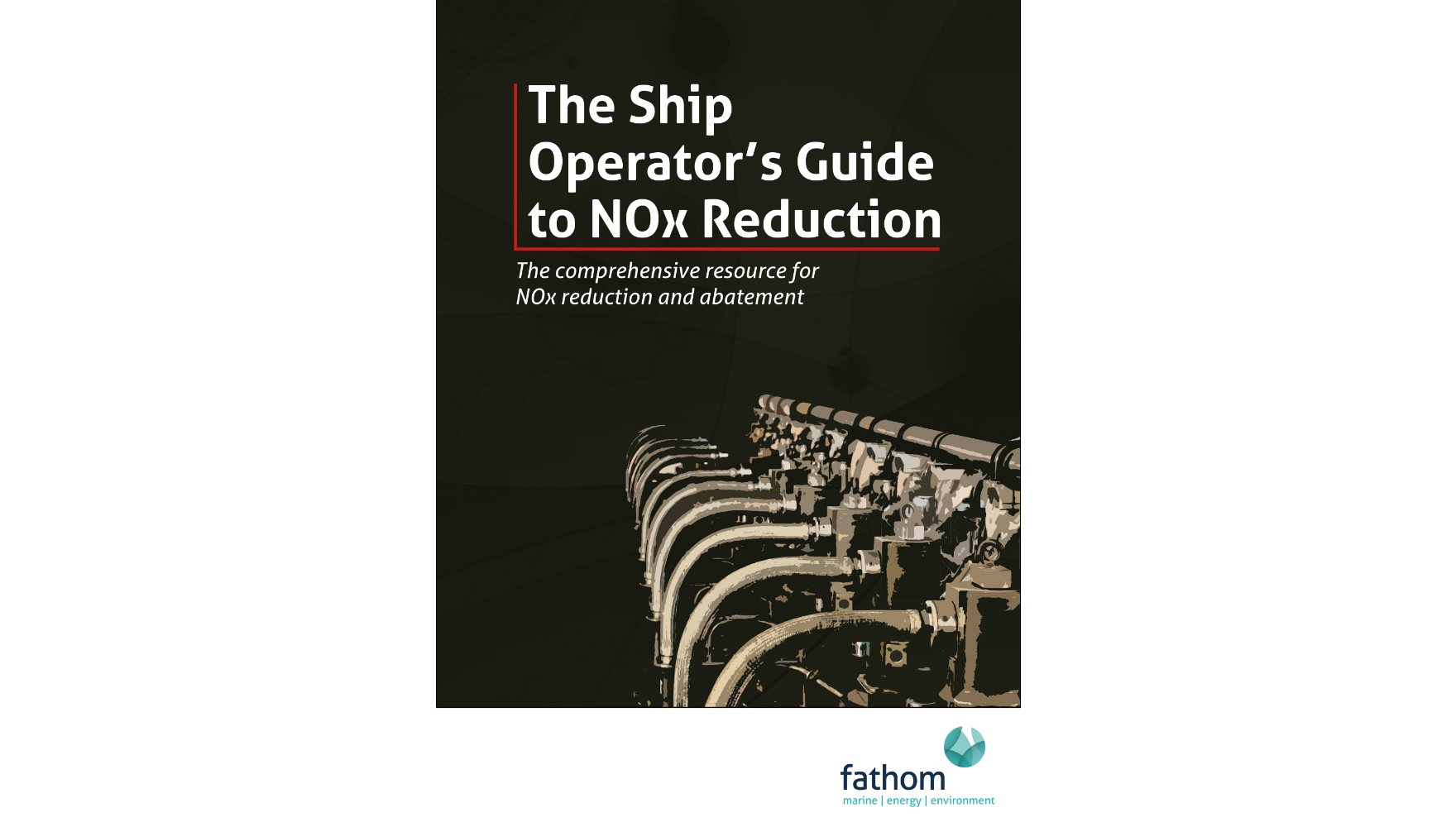Fathom Maritime Intelligence has published an independent, technical guide that contains practical tools to support ship owners and operators with decision making around nitrogen oxides (NOx) emission reduction and regulatory compliance strategies.
The guide offers an in-depth examination of all technology options and alternative fuels for both Tier II and Tier II NOx emission compliance in addition to an extensive, independent review of all selective catalytic reduction (SCR) systems available to the marine market.
LONDON – January 20, 2016: Fathom Maritime Intelligence, the specialist market intelligence provider for the maritime industry, has today announced the launch of a brand-new industry guide entitled: ‘The Ship Operator’s Guide To NOx Reduction’.
The development of this guide follows the regulatory constriction of NOx emission levels in NOx Emission Control Areas (ECAs) from January 1, 2016. Its creation was also spurred by an extensive ship owner and operator survey conducted by Fathom Maritime Intelligence, the responses to which highlighted the existence of a perceived “information void” for comprehensive resources available that detail all NOx reduction and abatement options with practical considerations for Tier II and Tier III NOx emission compliance.
The Ship Operator’s Guide To NOx Reduction not only sets out the requirements of the complex regulations governing NOx emissions, but also provides a clear road map to selecting the most suitable technologies or fuels to ensure regulatory compliance by hosting both technical information and practical considerations alongside financial data and market uptake statistics. Furthermore, the Guide hosts the industry’s only independent review of all SCR technologies available to the market.
For ship owners, future proofing any newbuild ships that are to set sail within designated NOx ECAs from January 2016 for Tier III compliance is essential and this Guide supports that process.
Equally, the future proofing of any vessels for Tier II compliance with existing and upcoming technological solutions for reduction, abatement or alternative fuel use is vital. The range of viable options to meet Tier II requirements has continued to grow since the implementation of reduced NOx emission levels through MARPOL Annex VI, Regulation 13 from January 1, 2011 for ships built on or after that date.
Those operators needing to adhere to regional NOx regulations such as the Norwegian NOx fund, or those wanting to take advantage of green initiatives, such as the Green Award would also benefit from being equipped with this all-encompassing guide.
The Ship Operator’s Guide to NOx Reduction can be purchased for a special introductory price of GBP £95 fromwww.fathommaritimeintelligence.com/store until March 1, 2016.
































